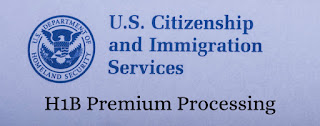Introduction
On August 2, 2017, Republican Senators Tom Cotton of Arkansas and David Perdue of Georgia proposed legislation titled the “Reforming American Immigration for a Strong Economy Act (“RAISE Act”). The RAISE Act contains provisions for reforming the employment immigration system, eliminating Diversity Visas, and eliminating family-based preferences for extended family and adult relatives. On the same day that it was proposed, the legislation was endorsed by President Donald Trump.
In this post, I will examine the proposed legislation in brief and explain that, while it has certain merits, the proposal is ultimately deeply flawed such that it stands little to no chance of becoming law. Simply put, it should not become law in its current form. Rather, I will explain why the proposal should constitute the beginning — rather than the conclusion — of efforts to reform the immigrant visa system.
For your reference, please see the following resources on the legislation, courtesy of the Senate website of Senator Cotton:
- Full text of the legislation [PDF version];
- News Release [PDF version];
- Section-By-Section Summary [PDF version]; and
- Fact Sheet [PDF version].
Overview of the RAISE Act
The RAISE Act focuses on immigrant visas and refugee admissions. Accordingly, nothing in the proposal would affect the nonimmigrant visa categories, including those that are work-based. We will tackle each of the major points of the proposal in turn. Please note that this is a general overview of the main points and not intended to be comprehensive.
1. Establish Skills-Based System for Employment-Based Visas
Our current employment-based immigrant visa system includes five preferences [see section on employment immigration and see section on investment immigration]. In general, this allows employers to petition for a foreign national under the rules of one of the preferences. In certain categories and preferences, self-petitioning by the foreign national is permitted and no job offer is required.
Under the new system, hopefuls for employment-based immigrant visas would be evaluated on the following six factors:
- Education;
- English-language ability;
- High-paying job offers;
- Age;
- Record of extraordinary achievement; and
- Entrepreneurial initiative.
A certain number of points would be allocated based on the age of the applicant.
In order to qualify for an immigrant visa, an applicant would need to accrue at least 30 points under the system. The number of employment-based immigrant visas, including derivative spouses and children (“children” defined as being under the age of 18), would be capped at 140,000 annually. The proposal accounts for the fact that there would likely be more individuals meeting the 30 point threshold, along with derivatives, than available employment-based visas in a given year. Accordingly, the proposal would provide for a variety of tiebreakers among individuals with the same number of points.
From the pool of qualified applicants, the United States Citizenship and Immigration Services (USCIS) would invite a certain number within the cap to seek employment-based visas. This would occur twice each fiscal year, with enough applicants to assume half of the 140,000 employment-based immigrant visas being invited each time. Invited applicants would be permitted to submit applications and undergo security vetting.
The RAISE Act would provide a nonimmigrant option for dependent adult sons and daughters of employment-based visa beneficiaries. However, the nonimmigrant adult would not be able to work in the United States, avail him or herself to employment authorization, or remain if he or she became able to care for him or herself. It would also allocate a small number of points to certain individuals who were prevented from procuring a family-based visa under the new rules, but who decide to seek an employment-based visa instead.
2. Curtail Family-Based Immigration
The RAISE Act would restrict family-based immigration to immediate relatives (spouse and unmarried children) of U.S. citizens and spouses and unmarried children of lawful permanent residents. The FB-1, FB-2B, FB-3 and FB-4 extended family preferences would be eliminated. The definition of “child” would be changed from under the age of 21 to under the age of 18. Family-based immigration would be capped at 88,000 admissions each fiscal year.
Individuals with outstanding approved petitions in eliminated preference categories would be permitted to obtain a visa if he or she is scheduled to receive a visa no more than one year after the enactment of the RAISE Act, or if he or she entered the United States within one year of the date of the enactment.
The RAISE Act would create a special nonimmigrant classification for parents of adult U.S. citizens. This would be the “W” nonimmigrant category. A W visa would be authorized for an initial period of five years, with the option of five year extensions (no limit on number of extensions). W nonimmigrants would be ineligible from accepting means-tested public benefits and ineligible for employment authorization. The U.S. citizen son or daughter would be responsible for the financial upkeep of the W nonimmigrant parent, including provision of health insurance.
The RAISE Act would make necessary conforming amendments to the V nonimmigrant category.
3. Eliminate the Diversity Visa Category
The RAISE Act would abolish the Diversity Visa category, which allocates 50,000 immigrant visas annually to individuals from countries with low levels of immigration to the United States.
4. Refugee Cap
The RAISE Act would cap the number of refugees that could be admitted in each fiscal year at 50,000.
5. Naturalization and Public Charge
The RAISE act would require the sponsor of an immigrant applying for naturalization to reimburse the government for any means-tested public benefits used by the immigrant within five years of his or her obtaining lawful permanent resident status before the immigrant would be eligible for naturalization.
Support and Opposition
The most important and notable supporter of the RAISE Act proposal is President Trump himself. Although the RAISE Act stands little to no chance of becoming law in its current form, it goes without saying that the President's support for any piece of legislation is significant. Unsurprisingly, the proposal also drew support from Attorney General Jeff Sessions, who was an ally of Senator Cotton and a supporter of lower levels of immigration during his twenty-year tenure in the U.S. Senate [PDF version]. Interestingly, Senator Marco Rubio of Florida, who has generally supported higher immigration levels, expressed conditional support for the effort without outright endorsing the proposal.[1] Commentators who generally support immigration reform that would lower immigration levels such as Mark Kirkorian of the Center for immigration Studies have expressed support for the general aims of the proposal, if not every aspect.[2]
The proposal has received nearly unanimous opposition from the Democratic Party and Democratic officials. Liberal groups have been similarly opposed. This includes the American Immigration Lawyers Association (AILA), which generally opposes these types of polices. The President of AILA, Annaluisa Padilla, took the position that the proposal “repudiates our national ethos, which recognizes the value of keeping families together to create a stronger nation.”[3]
Perhaps more ominous for its prospects, however, is the opposition from Republicans. The legislation was opposed, for example, by Senators Lindsey Graham of South Carolina and Jeff Flake of Arizona, two Republican members of the ill-fated “Gang of Eight” reform effort from 2013 (along with Rubio and Senator John McCain).[4]
My Thoughts on the Proposal
Overall, I do not support the RAISE Act in its current form due to its myriad flaws. Fortunately, its flaws will prevent it from being seriously considered by Congress. However, if there is will on both sides, perhaps an unlikely prospect, there are solid points of the proposal which could eventually form the basis of a more positive immigration proposal.
Where I Agree
In the interest of positivity, let us look at a few of the good points of the proposal.
Firstly, I agree with a merit-based system for employment immigration in general [see blog]. While I have numerous issues with the version proposed in the RAISE Act, it is worth noting that this should be a starting point for reforming our employment immigration system.
Secondly, I agree with the elimination of the family-based fourth preference category for siblings of U.S. citizens. I broadly support emphasizing the immigration of immediate relatives and the spouses and children of permanent residents. Our current immigration system has too many visas consumed by chain migration. There is undoubtedly room for compromise on how far this should go, if at all, beyond eliminating the family-based fourth preference category.
Thirdly, I agree with the RAISE Act's abolition of the Diversity Visa program. While other immigrant visas are accorded based on factors such as family relationships, employment, investment, humanitarian grounds, or to certain victims of violence, the Diversity Visa program is based on primarily being from a country with low levels of immigration. While I know for a fact that many wonderful individuals have become immigrants through the Diversity Visa program, the premise of the program is simply no basis upon which to award immigrant visas. Some, such as AILA, argue that the program accords with an interest in “recogniz[ing] the value of diversity.”[5] However, I would argue that no discernable U.S. interest is served by admitting individuals from countries based on little more than their country of origin. Outside of the family immigration context and certain special programs, the interests of the United States are served by admitting individuals based on merit, which does not include being from a country from which few people apply or can qualify. If anything, it is unfair to countless highly skilled immigrant visa hopefuls with job offers, or family members who have followed the rules through a years' long process, that 50,000 immigrant visas are issued based on national origin.
Finally, I agree generally with capping refugee admissions. More broadly, I support the efforts of the current administration to perform a wholesale reevaluation of the United States Refugee Admissions Program (USRAP).
Where I Disagree
Here, I will examine some of my most prominent issues with the proposal. Please note that my not that omission does not necessarily mean agreement. Neither my list of disagreements nor my list of agreements is intended to be exhaustive.
My first point of disagreement with the proposal is the severe reduction in overall immigration levels. This is where my approach would diverge from the approach taken by Senators Cotton and Perdue. We agree that the immigration system should be tailored to benefit the national interest. However, we disagree on the effect of immigration. It is my position that skilled immigration benefits the U.S. economy, whereas Senators Cotton and Perdue, in addition to other proponents of lower levels of immigration such as Attorney General Jeff Sessions and White House Chief Political Strategist Steve Bannon, believe that the current level of immigration harms the U.S. economy rather than just the misguided emphasis of the immigration system. While I support the elimination of the Diversity Visa program and certain family-based preferences, it is my position that these visas should be, at the very least, reallocated to merit-based employment categories rather than eliminated altogether.
My second key point of disagreement is with the points system itself. The points system, as constructed in the RAISE Act, affords too much discretion to the USCIS. A more sound points system would set clear benchmarks in statute that are not subject to case-by-case discretion or extensive modification through regulations. Applicants should have a clear understanding, before applying, of whether they have the requisite qualifications to meet the points threshold. Furthermore, this would allow those who are interested in obtaining permanent resident status based on employment to determine where they need to fill in the gaps if their qualifications do not meet the threshold.
My third key disagreement is how it would handle those who meet the threshold. Meeting the points threshold would not necessarily permit an individual to apply for an immigrant visa. Rather, the individual would be placed in a pool and would only be permitted to apply for a visa if selected from the pool by the USCIS. This system is unnecessarily cumbersome and unresponsive to the needs of business. Meeting the points requirement should allow a business to begin the process of seeking to bring a prospective employee to the United States with permanent resident status. Beyond determining whether a foreign national meets the points requirement, the USCIS should not have a role in determining who can even apply for a visa.
For my fourth disagreement, I will note one point on which I agree with AILA. AILA criticized the RAISE Act for “unfairly eliminat[ing] key immigrant visa programs, such as the EB-5 immigrant investor program, the special immigrant religious workers program, and the physician national interest waiver green card program.”[6] Now, to be clear, I think that the employment-based immigrant visa categories should be addressed wholesale in any reform effort. However, I agree with the general point that our immigration system should be designed to target specific needs. Some needs could be addressed as carve-outs in a points-based system (such as physicians and investors), and others could be met through reforms separate from the points-based system (religious workers). I would hope to see this addressed in a better version of the legislation.
Fifth, it is important to consider that employers rely on both nonimmigrant and immigrant visas to meet their needs. It does not make sense to address only one without addressing the other. For example, changing how immigrant visas work in one area may suggest that a nonimmigrant visa category should be modified to ensure that the needs of employers are met. For future efforts to reform immigrant visa preferences, it is worth considering employment immigration generally in both nonimmigrant and immigrant contexts.
Finally, I do not think that a change to our immigrant visa system should punish those who have followed the rules and who have approved immigrant visas. For example, while I support eliminating the family-based fourth preference category for siblings of U.S. citizens, I do not support ending the process for those who have patiently waited for the opportunity to apply for a visa based on an approved petition. The RAISE Act would mean that many individuals who have waited to apply for a visa based on an approved petition for over a decade would suddenly be unable to obtain a visa. It is true that foreign nationals do not have a right to enter the United States; however, in the vast majority of cases, it would be patently unfair and represent bad policy to penalize those who have invested time and resources into long-pending applications by suddenly revoking their approved petitions.
Conclusion
The current iteration of the RAISE Act is flawed, but it should not represent the end of the process. Although I oppose legalization without first handling immigration enforcement in a concrete way [see blog], it is well-past time for us to modernize the employment immigration system. If addressed in both the nonimmigrant and immigrant contexts, reform could reduce the incentive to employ aliens illegally and ensure that the most qualified applicants are preferenced. Senators Cotton and Perdue, in addition to President Trump, have the right idea generally with the proposed merit-based system. Let us hope that Congress develops alternative proposals to address the flaws with that system in the RAISE Act in addition to other issues with the legislation.
Please visit the nyc immigration lawyers website for further information. The Law Offices of Grinberg & Segal, PLLC focuses vast segment of its practice on immigration law. This steadfast dedication has resulted in thousands of immigrants throughout the United States.
- Daugherty, Alex. “Rubio still considering Trump-sponsored immigration plan introduced in February.” Bradenton Herald. Aug. 4, 2017. Bradenton.com
- See e.g., Kirkorian, Mark. “Finally, a debate on Legal Immigration.” Center for Immigration Studies. Aug. 2, 2017. Cis.org.
- AILA Doc. No. 17080370 (Aug. 3, 2017)
- Daugherty, Alex. “Rubio still considering Trump-sponsored immigration plan introduced in February.” Bradenton Herald. Aug. 4, 2017. Bradenton.com
- AILA Doc. No. 17080234 (Aug. 3, 2017)
- Id.
Lawyer website: http://myattorneyusa.com















